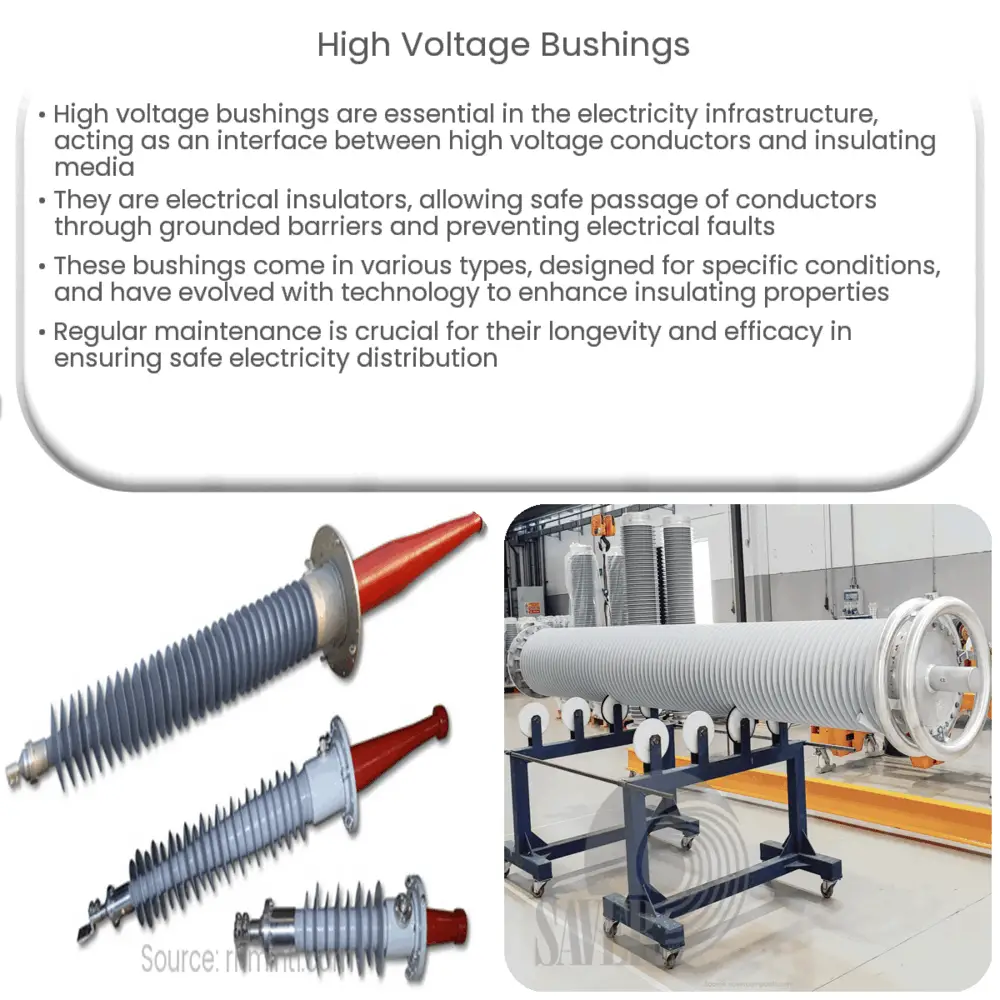Explore the role, functions, types, and technological advancements of high voltage bushings in the modern electrical infrastructure.

Introduction to High Voltage Bushings
High voltage bushings play an integral role in our modern electricity infrastructure. They act as the critical interface between high voltage conductors and insulating media, such as transformers or circuit breakers. Before diving into the specifics, it’s essential to understand what bushings are and how they operate within these systems.
Understanding High Voltage Bushings
At its core, a bushing is a type of electrical insulator that allows an electrical conductor to pass safely through a grounded conducting barrier such as the case of a transformer or circuit breaker. The ‘high voltage’ component refers to the fact that these bushings are designed to withstand and operate effectively under high voltage conditions. They are typically constructed from porcelain or composite materials, which offer the necessary insulating properties required for high voltage applications.
The Function of High Voltage Bushings
High voltage bushings serve two primary functions. First and foremost, they provide insulation between the conductor and the grounded parts of the equipment, preventing any electrical faults or catastrophic equipment failures. This insulation function is vitally important, as it allows the safe transmission of high voltages without the risk of electric shock or fire.
- Insulation: As previously mentioned, the primary function of a bushing is to insulate the conductor from the grounded portion of the equipment. This feature ensures the safety of both the equipment and the personnel operating it.
- Conductor Passage: Bushings provide a safe pathway for electrical conductors to pass through grounded barriers. They facilitate the connection of high voltage circuits to other components, allowing for the efficient distribution of electricity.
Types of High Voltage Bushings
There are various types of high voltage bushings, each designed for specific applications and conditions. Below are a few examples:
- Oil-filled Bushings: These are often used in transformers and some types of circuit breakers. They are immersed in insulating oil, which enhances the bushing’s ability to withstand high voltages.
- Gas-insulated Bushings: As the name suggests, these bushings use an insulating gas, such as SF6, to withstand high voltage conditions. They are typically used in gas-insulated switchgear and transformers.
Advancements in High Voltage Bushing Technology
Advancements in high voltage bushing technology have largely focused on enhancing the insulating properties of the materials used in their construction. One significant development is the increased use of composite materials such as epoxy resin and silicon rubber. These materials are less prone to environmental degradation compared to traditional porcelain, enhancing the bushing’s lifespan and reliability.
Selection and Maintenance
The selection of a suitable high voltage bushing depends on numerous factors, including the type of equipment it is to be installed on, the operating environment, and the specific voltage requirements. Regular maintenance of these bushings is also critical. This includes regular inspections to check for any signs of physical damage or deterioration, and cleaning to remove any accumulated dirt or debris, which could impact the bushing’s insulating properties.
Impacts on Energy Infrastructure
High voltage bushings are a critical component of the global electrical grid. They facilitate the safe and efficient transmission of electricity from generation facilities to end users. Without these vital components, it would be challenging to distribute high voltage electricity over long distances, which is a fundamental requirement for our modern, electricity-dependent societies.
Conclusion
In conclusion, high voltage bushings serve a critical role in the electrical power industry. Their primary function is to provide an insulated passage for high voltage conductors through grounded barriers, ensuring the safe and efficient distribution of electricity. Given their importance, the continued development and maintenance of high voltage bushings is vital. As technological advances continue, we can expect these components to become even more effective and reliable, supporting the ongoing growth and evolution of our electrical infrastructure.

